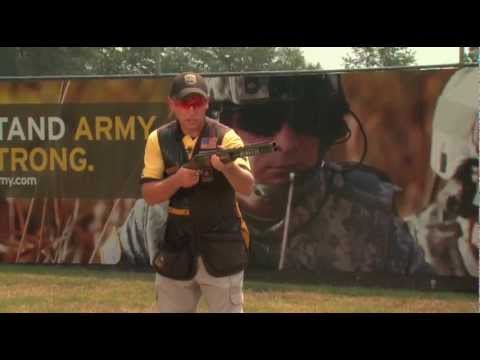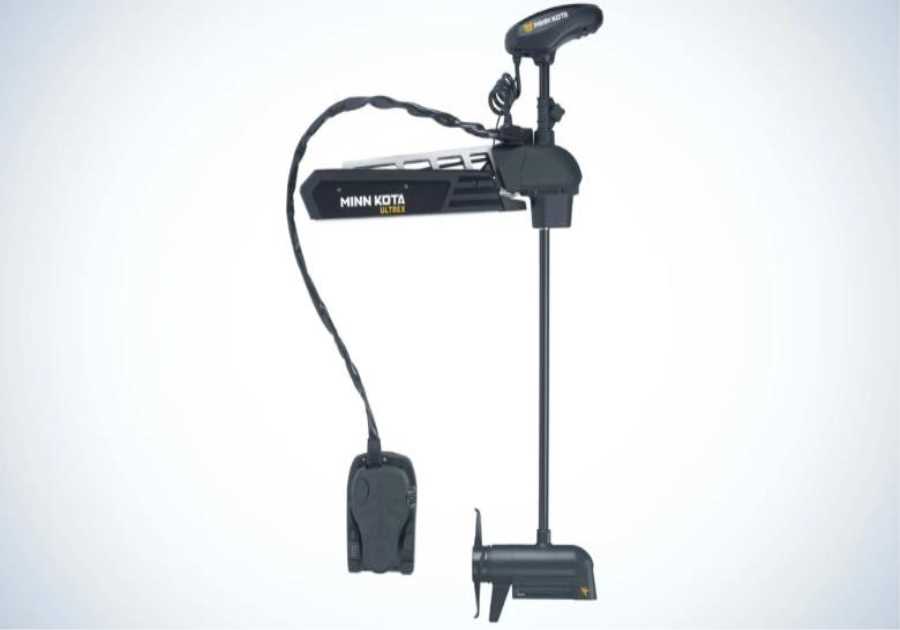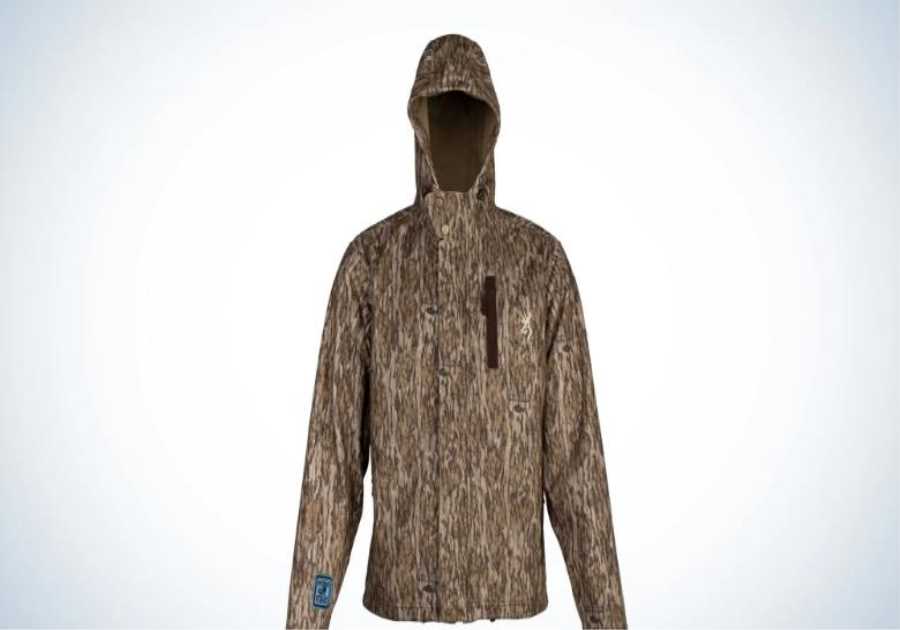||
We may earn revenue from the products available on this page and participate in affiliate programs. Learn More ›
In today’s diverse world of sporting clays courses and various clay-centric games, there is one field that remains the foundation for shotgun shooting sports – the trap field. Trap shooting is a game of both cadence and skill and it requires mental grit, physical discipline, and endurance. When I first picked up a shotgun at 16 years old, I had no idea that trap shooting would be my gateway to all shotgunning sports. However with some outstanding mentors, I was quickly drawn to the original clay target game and beyond.
In the guide that follows, I’ll explain the very basics of trap shooting and detail out the rules, skills, and gear you’ll need to get started.
Trap Shooting History
The game of trap began in the late 18th century in England as a way for shooters to improve their wing-shooting technique. The original trap targets were actually pigeons (the feathered kind). Prolific in numbers, the pigeons were released from a house or from under a hat down range of the shooter and they were engaged from a predetermined distance. Since then, trap targets have changed from feathered critters, to glass balls, and finally to the clay targets we know, love, and sometimes miss today.
In the mid 1800s, trap made its way to the United States and it has become an immensely popular game with some key variations. For the purposes of this guide, we are going to focus on what is known as American Trap.
American Trap is perhaps the most widely found field across shooting facilities nationwide. Within American Trap, there are three sub-games – singles, doubles and handicap.
Trap Field Basics
USA Clay Target League
Before we dive into each sub-game, we’re going to explore the anatomy of a trap field. The focal point of a trap field is the trap house. This house is a bunker-type building at ground level that protects a trap machine. The machine is usually triggered with the press of a remote button or a voice-activated release system. Today’s trap machines can hold up to several hundred targets.
A modern trap machine has the ability to oscillate within pre-set lateral and elevation parameters, depending on the specific discipline. The stations for singles and doubles are located 16 yards back from the trap house. There are five and they are arranged in a slight arc around the trap house.
The stations in trap are typically concrete pads or squares. A shooting squad can be up to five shooters (never more) and the same shooter leads off the sequence following each rotation. To get their target, the shooter calls “pull” when ready and the target is released. Frequently, a trap field employs free-standing voice activated devices at each station in lieu of a corded or cordless button activated manually by an observer, range officer, or scorekeeper.
Trap Shooting Rules
The basic concept of trap shooting is the same no matter what sub-game you’re playing: call “pull” and shoot the clay target. Beyond that, your gun must be broken open or bolt open at all times (gun type depending) unless on the station and it is your turn to shoot. This falls under both safety and etiquette and translates across the shotgun games.
There is a nuance here to note: trap is a game of cadence and rhythm. When on a squad of competent shooters, it can be frowned upon to hold up the shooting order by not being prepared when your turn comes around. This means having your ammunition ready and your pre-shot routine dialed in.
The specifics of how trap is shot change depending upon which sub-game you’re playing. Here’s a look at the rules and structure of the three popular sub-games of trap.
Singles Trap
- Five shooters (one per station).
- Shot from the 16-yard line.
- Trap oscillates a total of 54 degrees left to right (27 degrees each side of center), with target variation up to a 34-degree arc.
- The actual point of launch is unknown to the shooter.
- The shooter will engage five targets from each station before rotating to the next.
- A round of singles trap consists of 25 targets.
Doubles Trap
- Five shooters (one per station).
- Shot from the 16-yard line.
- Trap machine does not oscillate, but the targets still fall along the degrees listed above.
- The shooter will engage five pairs from each station with a total of 10 targets taken per station before rotating.
- A round of doubles trap is 50 targets.
Handicap Trap
The biggest difference with handicap trap is that we vary the distance from which you shoot. The 16-yard line is nearest to the trap house. Extending behind the 16-yard stations is a line of additional stations in one-yard increments extending to 27 yards. The stations are arranged in the same arc found at the 16-yard line, although slightly amplified due to angle.
- Five shooters (one per station)
- Between 18 and 27 yards
- Trap machine oscillates within the parameters listed above
- The shooter will engage five targets from each station before rotating to the next.
- The goal is to increase difficulty by increasing distance from the trap house.
- Shooter “earns” punches toward additional yardages through qualifying scores (96 or above out of 100).
- A round of handicap trap is 25 targets.
More Facts About Trap Targets
- Target speed for singles and handicap is approximately 42 miles per hour.
- Target speed for doubles is approximately 39 miles per hour.
- The clay target measures 4 ⅓ inches in diameter.
- A trap target must be thrown no less than 48 yards and must reach a height of 10-12 feet when 10 yards from the trap house.
Trap Shooting Guns
Photo by Andrea Bogard
Now we’ve figured out the basics of how to shoot trap. But what do we shoot with? Trap, like its widely popular cousins, skeet and sporting clays, is a shotgun game. While you can shoot trap with most sporting type shotguns, trap-focused shotguns have some unique features we’ll discuss here.
Trap-focused shotguns have features like a Monte Carlo comb, raised and adjustable ribs, and longer barrels. Additionally, some trap specific shotguns come in a configuration called an “unsingle.” This is basically a single shot over/under that is designed to create optimum barrel alignment in relation to the eye and aid in recoil management.
Most of these designs and features are meant to perfect the shotgun’s point of impact. This can be a murky phrase that leads into discussions of patterning, pattern percentages, and pellet count. We’re not going to go too far into the weeds here, but it requires touching on when discussing trap guns.
Point of impact essentially means the spot at which your pattern hits in relation to the spot at which you aimed. The angles and variables behind the gun are important here. Trap guns generally have a set of adjustments that elevate the pattern (point of impact) by altering the position of the eye in relation to the receiver and end of the barrel. This is otherwise known as the sight plane. Since clays are rising as they fly out of the trap thrower, it makes sense to have a slightly higher point of impact with trap guns.
The takeaway here is that most modern shotguns are adjustable so that they can be made to fit you well. Before running out and buying a new shotgun, it is important to try as many as possible to define your likes and dislikes. Check out a variety of break-action shotguns and autoloaders to figure out what features you want when you do get ready to buy.
Read our guide on the types of shotguns here.
As far as load capacity, singles and handicap trap require only one shell at a time. Doubles trap requires two, ruling out an unsingle configuration for this particular discipline.
Basic Trap Shooting Gear
After a suitable gun, the next thing you’ll need is ammunition that is gauge appropriate and between No. 9 and No. 7 ½ in shot size. Common trap loads in common gauges include:
- 12 gauge in 1 ounce or 1 1/8 ounce charge weights in 7 ½, 8, or 9 shot size. You can find 8 ½ shot, but it is primarily in handloads and not commonly found in factory offerings.
- A common handicap load is 1 1/8 ounce of 7 ½ or 8 shot. For non-handicap singles, a common load is 1 ounce to 1 1/8 ounce of 7 ½ or 8 shot.
- 20 gauge in 7/8 ounce charge weights in 7 ½ 8 or 9 shot size. A 20 gauge is typically not a top choice for handicap trap, but can be suitable for non-handicap applications.
Other gear needs for trap are very standard for any clay target game. You’ll need a good pair of shooting glasses that offer protection, condition appropriate color lenses (i.e. avoid dark sunglasses on an overcast day) and quality glass/polycarbonate to showcase the target as crisply as possible.
If you have corrected vision, speak to your eye doctor to determine the best combination of contacts/prescription lenses to achieve your desired vision needs on the trap field. Remember, if you can’t see it, you can’t shoot it.
Next is ear protection. I generally don’t shoot a shotgun or rifle with muffs. They interfere with my cheek-weld and hinder my ability to really engage with the gun. Especially in trap, where high combs are common, muffs can get in the way. I prefer in-ear plugs of some variety.
The item is a shell pouch or vest of some variety. Whatever you choose needs to be capable of carrying 25-50 shells, depending on which trap discipline you’re shooting. A vest with a shoulder pad can be nice for reducing felt recoil.
Trap Shooting Tips
Photo by Andrea Bogard
So, how do you actually shoot trap? Here are some tips and pointers to get you started.
Set your feet properly. You need to position your feet to accommodate the lateral arc of target angles. You might receive a hard left, hard right, or midline target presentation and your body needs to be able to accommodate the corresponding swing. Many trap shooters set up square to the trap house. As with all shotgun disciplines, this is a starting point and each shooter needs to fine-tune what works for them.
Know where to look. As you don’t know where exactly your target will be, you want to quickly acquire the target and smoothly move your gun toward it. Remember that trap targets only travel farther away. Thus, getting eyes on your target early in the flight path leads to higher success.
Set a hold point. This refers to where you hold your barrel in preparation for the release of the target (trap is generally shot with a pre-mounted gun vs. a dismounted construct). Finding a hold point that gives you the ability to quickly and consistently acquire your target across the spectrum of the arc is critical. This hold point may vary as you progress through the five stations. A good starting point is the top of the center of the trap house. You can adjust as needed depending on your vision and reflexes.
Understand lead. When you call “pull!” the bird comes out, the flight line is acquired and with a smooth trigger pull and clean follow-though, the target will be transformed to an “X.” But to do this consistently we must touch on the discussion of “lead.” Below are the basic types of lead with a brief description. You, as the shooter, should choose which works best for you.
Sustained lead means that your barrel begins ahead of the target and stays there throughout the shot and follow-through.
Swing through lead means that your barrel begins behind the target, intercepts it and then accelerates through as the shot is taken.
Last, we have pull away lead. Some would argue that there is very little difference between this method and swing through. However, with this method, the target line is acquired and matched and then the shooter pulls the barrel ahead of the target to achieve the desired perceived lead.
Slow down. It can seem like you need to shoot quickly since those clay targets are moving fast at 39 miles per hour (or faster). However, perception is everything. One of my coaches instilled in me the necessity of what he called a “half speed swing.” This essentially made me focus on moving in what felt like slow-motion. In actuality, my movements became infinitely smoother and more precise. Remember the axiom: “slow is smooth; smooth is fast.” I learned by consciously slowing down that my precision increased and the X’s came a lot easier.
Establish a pre-shot routine. I can’t stress this one enough. A consistent pre-shot routine is imperative for successful shot execution, regardless of shooting discipline. I always start with my foundation (stance) and work my way up from there. Below you’ll see a short video of Vincent Hancock discussing his pre-shot routine. Even though he’s not shooting trap here, it will give you a good idea of how to establish your own pre-shot routine.

The station is yours. Something I see a lot in trap, especially with young or less experienced shooters, is the often self-imposed pressure to hurry through set up and target call. Don’t. For that moment and that sequence, the station is yours. Find your rhythm and make sure you call “pull” when you’re ready, not because someone next to you got ready quicker on their turn.
Follow through. The shot doesn’t end when you pull the trigger. Make sure you complete your shot with a smooth follow-through. Stay in the gun and keep it moving along the trajectory. Like golf, baseball, and life in general, follow-through is key to success.
How to Get Started Trap Shooting
Learning the basics of trap from a single expert source can be a huge help. Many shooting clubs are filled with well-intentioned, long time shooters who have very strong ideas about what works for them. The sentiment here is nice, but taking coaching from a bunch of random shooters can get confusing. I suggest finding an official instructor who can help you identify your goals, work with your learning style and effectively head off bad habits before they take root. This can save you years of frustration.
At the end of it all, when you call “pull,” acquire the target and squeeze the trigger, the smell of freshly burned gunpowder wafting back should put a smile on your face. Whether you want to shoot the occasional 16-yard round on a Sunday afternoon or run 100 straight from the 27-yard line, the game of trap can provide a lifetime of fun and enjoyment.
The post Beginners’ Guide to Trap Shooting appeared first on Outdoor Life.
||-------------------------------------
By: [email protected] (Andrea Bogard)
Title: Beginners’ Guide to Trap Shooting
Sourced From: www.outdoorlife.com/guns/trap-shooting/
Published Date: Mon, 29 Apr 2024 13:44:33 -0400
.png)





